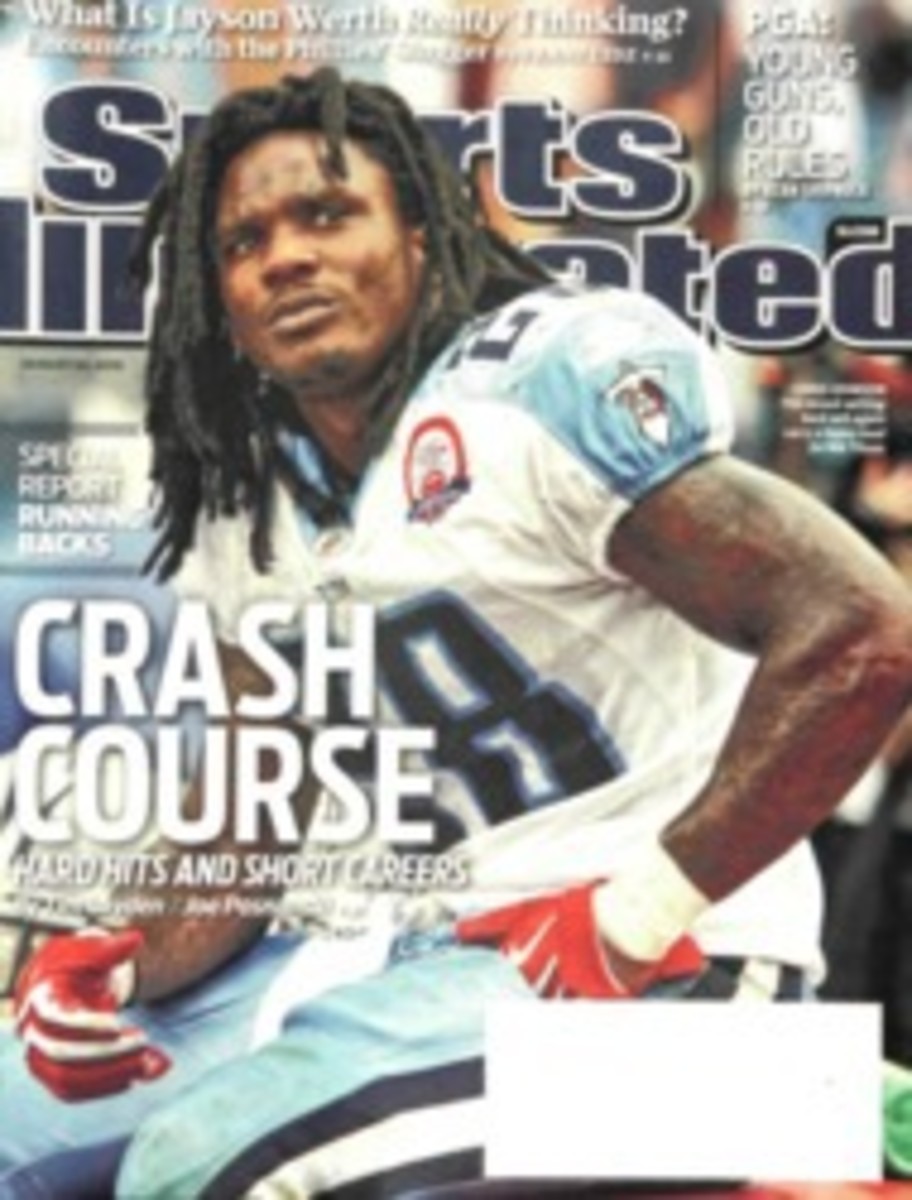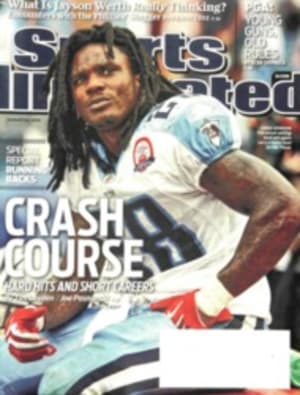
It's Lonely at The Top
My locker room at low-level junior tennis tournaments was my dad's blue van, which indiscreetly rumbled into the parking lots at the 12-and-under round-robin events with its tinted windows and a landscape scene airbrushed on the side panel that screamed Scooby-Doo Mystery Machine. I would slip out of the van's front door and then, hoping to go unseen, run as if I were trying to duck sniper fire on a path to the registration table. Check-in was usually at 8 a.m. on Saturdays in the backwater towns of Florida during the 1980s. The day went something like this: Wake up at six, drive an hour, wait for the draw, eat powdered doughnuts, play the first match feeling queasy, lose the match, change sweat-soaked clothes in the van, wait for the second match feeling no confidence, lose the second match, drive an hour home while tuning out my dad's pep talk about my near breakthrough. (Mercifully, my coach did not join us on those trips.)
All I knew was that tennis time-sucked an entire weekend day that could have been spent doing something productive: like hanging at the mall food court with my friends. The futile chase after a "breakthrough" went on for a couple of years. What I remember most about that time is the isolation. I can't think of any childhood pursuit lonelier than a career in tennis, in which relationships consist of a triangle of player, parent and coach. "I had no one to share anything with," Andrea Jaeger told me in an interview a few years ago, well after burnout and disillusionment forced her from the game at 22. She retreated, threw her prize money into a foundation and is now a nun, making up for a lost childhood with sisterhood.
Camaraderie has never been more culturally enmeshed than in today's social-network-obsessed society; our worth is measured numerically by how many Facebook friends and Twitter followers we have. It's tough to be a loner in America, which may partially explain why on Aug. 10 U.S. men disappeared from the Top 10 of the ATP Tour for the first time in 37 years, when Andy Roddick (a Twitter devotee with 333,000 followers, by the way) slipped from a No. 9 ranking to No. 11.
The most popular reason offered up for the vanishing U.S. male star is globalization—true enough, given the longtime occupation of the top spots by Switzerland's Roger Federer and Spain's Rafael Nadal, with a list of Croats and Brits and Argentines behind them—but that's a simplified answer to a complicated question. Think about the types of personalities that once dotted the Top 10. Gone are the days when American introverts (Pete Sampras), virtuosos (John McEnroe) and introspective thinkers (Andre Agassi) ruled the tour pop charts. In his recent autobiography Agassi revealed his tortured existence in the rigid tennis world: "I play tennis for a living even though I hate tennis, hate it with a dark and secret passion, and always have."
While the decline of the American men drew attention last week, at least a few U.S. fellas were maintaining a high-profile presence. As of Aug. 16 Roddick was ranked 13th, John Isner 19th and Sam Querrey 21st. The picture on the American women's side is actually bleaker. Although Serena Williams holds the No. 1 spot and Venus is No. 5, if you're doing a Google search for the next best U.S. woman, you'll have to spell Melanie Oudin's name correctly to find her at No. 44.
Who thrives in a sport in which the pressure is so intense on the individual? The American players who don't go it alone. Serena and Venus have survived at the top because they have each other. In the Wimbledon lounge during the '90s they were the two teens on the couch reading and discussing the same Harry Potter books. At the French Open players' café, when they were in their early 20s, they were leafing through magazines over pommes frites. The payoff for them has been longevity in a journey made side by side. It's not just a chick thing. The most successful doubles team in tennis history is the Bryan brothers. The twins who won their first doubles tournament at age six are still doing their awkward chest-bump act on court at age 32. The American soloists find tour life hard. "It's lonely," Mardy Fish once told me as he pulled from his racket bag a homemade family album filled with photos of his family and his dog.
The disappearance of Americans in a sport that the U.S. once ruled is a paradox: Tennis as a participation sport is growing like a magic beanstalk on public courts across the States. In 2009, according to the USTA and Tennis Industry Association surveys, the number of players swelled by 12%, or 30 million Americans. The last time tennis was this popular was in 1985, when Live Aid rocked, Gorbachev ruled, and McEnroe and Chris Evert Lloyd were No. 1.
The statistical disconnect between the rec center and center court isn't that hard to explain, though. Walk by the Central Park facilities in New York City and you'll see courts packed with kids swinging rackets like giant bubble wands for fun alongside fiftysomethings taking their hacks, knee braces be damned, to get a little exercise with friends. In its most basic form, tennis is a social sport. At its most competitive level, tennis is a secluded excursion in a Mystery Machine to the next tournament. It's solitary. It's antisocial. It's practically un-American.
Talk Back
If you want to comment on Point After or suggest a topic, send an e-mail to PointAfter@si.timeinc.com
Which U.S. players survive in tennis, where the pressure on the individual is so intense? Players like Serena and Venus, who don't go it alone.
PHOTO
JOHN BURGESS

